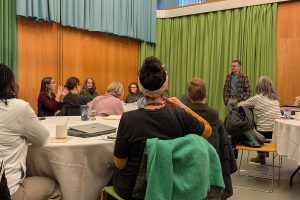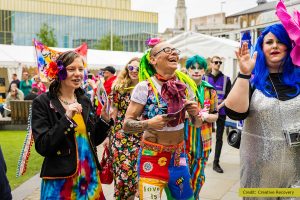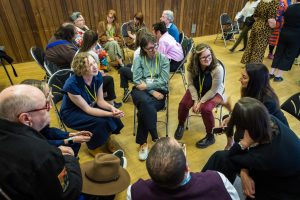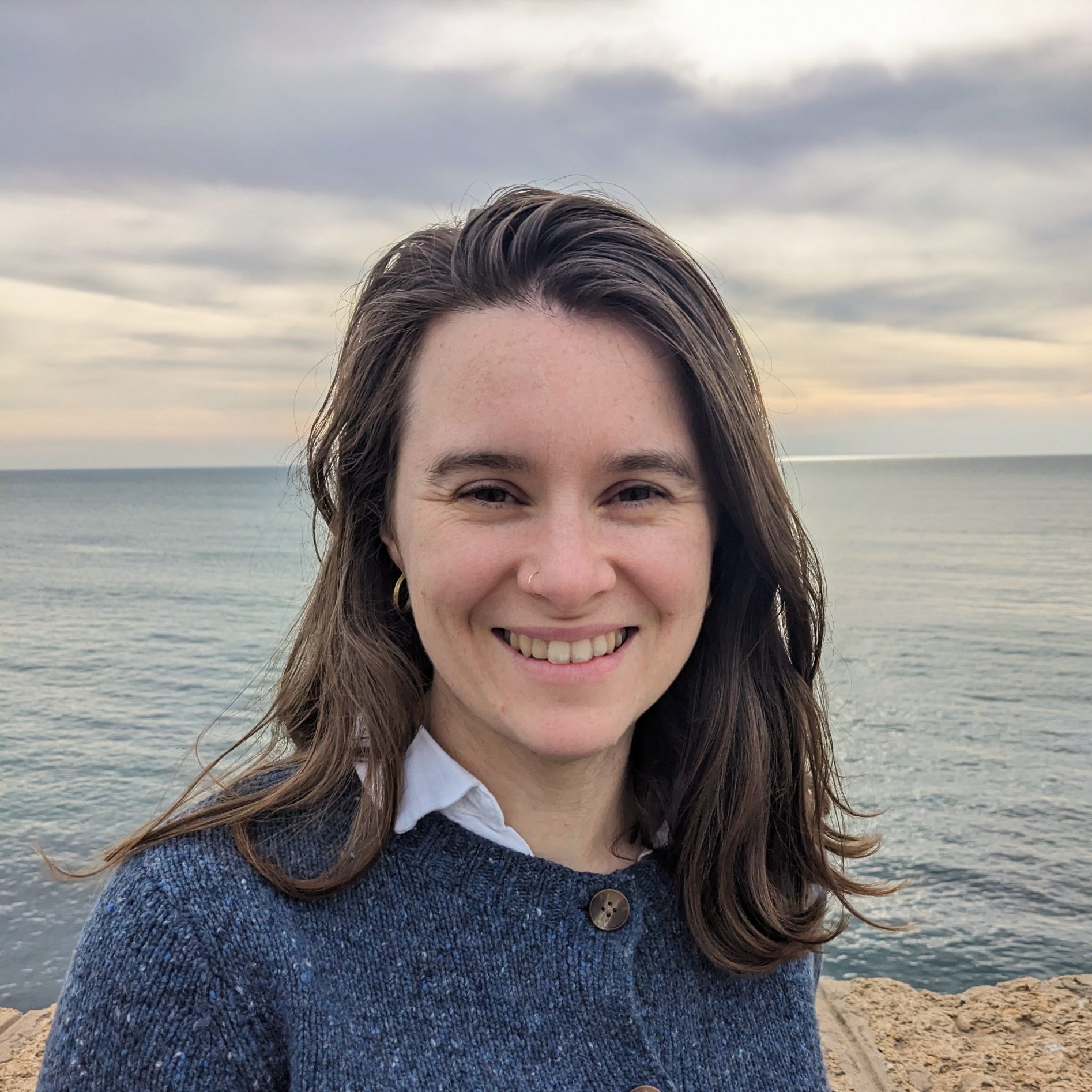
One strand of our Creative Health Boards project focuses on Participatory Action Research Projects – but what does that really mean? Clair Maleney, Embedded Researcher at Sheffield Hallam University, explores what can we learn about Participatory Action Research (PAR) from her ‘disastrous’ baking attempts over the past year.
The glass jar frothed, grey, spongy, and smelling of something between beer and rotten bananas. Heart full of hope, I added 100 grams of this goopy starter to the water, flour, and salt in my largest mixing bowl. I kneaded, folded, waited. 10 hours later, I heaved the cast iron pot out the face-cracking oven, lifted the lid and was greeted by my 100th UFO shaped loaf of sourdough.
After a year of forcing my friends and family to loaves and loaves of the objectively awful stuff, it was time to do more than blindly follow the recipe, hope the next loaf would improve. Something needed to change.
I pulled out my notepad and pencil, popped on my thinking cap, and sat down to design my research strategy to understand where I was going wrong with these flat stodgy loaves.
Research is an activity or set of activities used to understand something better.
Action research is a type of research aimed to use research to change outcomes through a cyclical process with four stages: Plan, Do, Reflect, Review. (A less rhyming set of names is Plan, Act, Observe, and Reflect).
As the aim of my bread research was to change the outcome of my baking from disastrous to decent, an action oriented approach made sense.
To conduct this research, I employed a number of fairly traditional methods:
- Plan
- A comprehensive literature of books, blogs, and videos on sourdough methods.
- A comprehensive literature of books, blogs, and videos on sourdough methods.
- Do
- Mix the bread following the recipe exactly.
- Quantitative data collection. Temperature is very important in sourdough bread making, so I used a thermometer to measure the temperature of the air and the dough while it rose, and documented them in my little notebook.
- I also wrote down observations about the texture and feeling of the dough as the hours passed. Was it Tough? Elastic? Springing back when I poked it?
- Reflect
- The UFO shaped loaf came out of the oven again.
- I sat down with friends who are more successful bakers and conducted qualitative interviews asking about their methods and approaches.
- Review
- Based on their input, decided which aspects of my approach I’d change and started again.
Learnings from the first action cycle informs the planning and acting in the second cycle. Each action research cycle is intended to deepen understanding and shift practice.
In my sourdough research, I initiated a new research cycle with each loaf. Planning my approach, mixing the ingredients to ferment, observing and documenting the conditions that let to success.
But in bread-making, like any research about complex processes, it was very hard to separate out the causes and the effects, particularly because there were so many factors outside of my control. On a warm day seven hours for the dough to rise might be too many, and on a cold day not enough.
In the end my patience for bad bread gave out. I retired my banneton and returned wiser and wearier to my local baker.
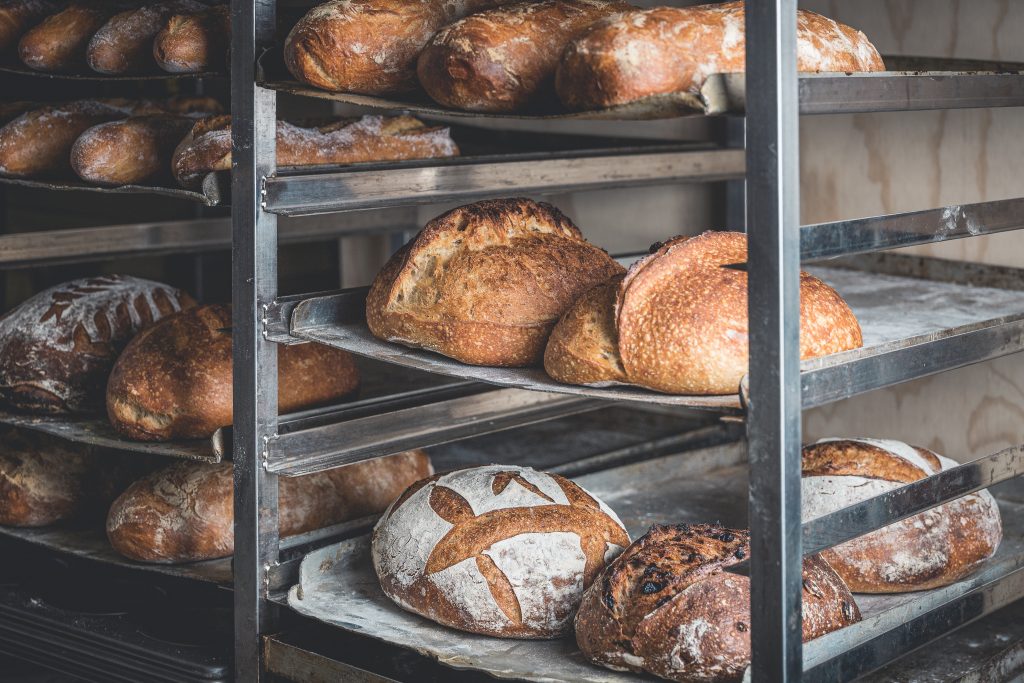
Participatory action research comes from a tradition that sees the power of research for social justice. The central thesis is that research should happen with individuals and communities rather than on or about or for them.
Looking back on my year of baking disappointment, I wonder, would everything have turned around if I could have spoken with the yeast and bacteria responsible for raising the loaves – instead of pounding them into submission on my timeline.
In my research I was doing research on sourdough breadmaking, rather than with the ingredients in my loaves. Imagine how quickly I could have gained clarity if I could have researched with the ingredients. If they could have told me what they were experiencing each time I made a change. Was it too hot? Were they hungry? Were they too agitated?
As a researcher, it is easy to draw faulty assumptions by positioning yourself as ‘expert,’ interpreting the data, rather than discussing it with the participants and people for whom the research is most relevant.
Learning to listen and receive feedback is one of the most important skills a researcher can develop, and just because research participants can’t ‘speak’ in a traditional way, doesn’t mean communication is impossible.
Had I continued my research process, I believe that in time I would have learned how to speak with my dough. A professional baker has invested hours in learning to communicate with yeast, flour, water, and salt. To feel the developing networks of gluten in an ongoing conversation with temperature and time.
In my approach to baking, I saw myself as master of the ingredients rather than an apprentice striving to learn their language. In hunger for immediate results and crusty bread, I did not allow myself to be transformed through a process of engagement.
Participatory Action Research is a process of extended engagement, trust building, learning to speak a new language of unfamiliar experience. The process can be transformative both in outcomes as well as for the researchers and participants.
The central tenants of Participatory Action Research are:
- No more experts and subjects:
- Does not privilege certain knowledges.
- Does not privilege certain knowledges.
- Research with, not research on:
- Acknowledges the reality of power structures, privileges, and intersecting identities.
- Acknowledges the reality of power structures, privileges, and intersecting identities.
- Centres people with the most experience
- Relational approach – Rupture and repair builds security.
In our work through the Creative Health Boards Project, we are committed to a collaborative action research approach that foregrounds coproduction and shared learning. This approach will enable people from different perspectives in the project, including community health and care providers and academic institutions to work together to research and change practices, develop relationships and ultimately tackle health inequalities. We have chosen a collaborative action learning model with the aim that our research and learning leads to transformative change.


